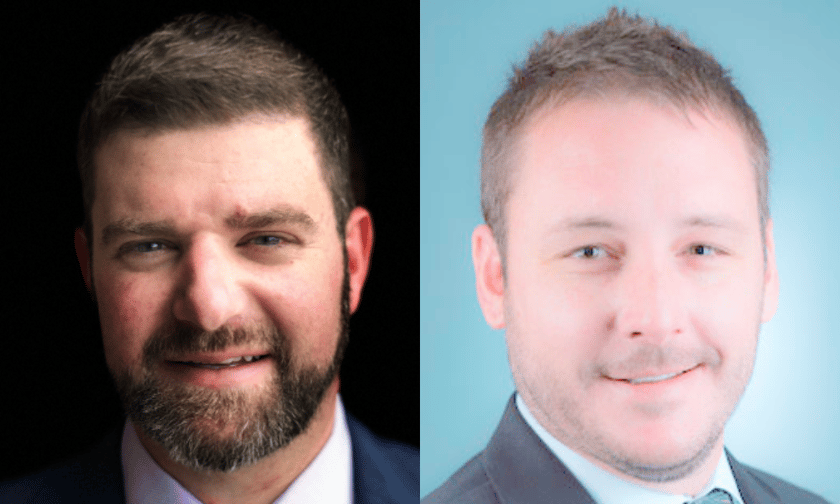

This article was produced in partnership with Verikai.
David Saric, of Insurance Business, sat down with Verikai’s senior sales executives, Mike Gold and James Hughes, to discuss why the cost of specialty drugs has been rising and its impact on payers, risk managers, etc.
The rising costs of specialty drugs in the US can be traced to these three separate phenomena: the demand for gene therapy drugs, pharmaceutical interest in making more money, and marketing laws.
“A lot of times these pharmaceutical companies are incentivized to come up with new drugs because they’re protected by the 20-year R&D clauses in the US. This is an area they can make money in,” said Mike Gold (pictured left), senior sales executive at Verikai.
“This is in conjunction with people who are now looking to gene therapy and historical DNA and its ability to improve their health with these type of drugs.”
Aside from consumer and pharmaceutical interests, the shift of marketing to end users of prescription drugs in America has also influenced this shift in rising costs.
“Big pharmaceutical companies switched from a push strategy of marketing, to a pull strategy in the mid 90’s. That is to say that the manufacturers now go straight to the RX consumer.. that’s you and me,” said James Hughes (pictured right), senior sales executive at Verikai.
“We now live in a society where patients are scheduling appointments with physicians specifically to ask for a prescription of something that they heard in the media. This drives up cost exponentially throughout the entire healthcare ecosystem.”
Additionally, these advertisements, unlike any other market in the US, do not have to disclose any costs, which can lead many to demand that they be put on these expensive medications due to their efficacy.
The rising costs of, and interest in, specialty drugs has had a direct impact on the loss ratios of both payers and insurers.
“We always have to look at specialty drugs and the impact that they’re going to have on a potential plan year,” Gold said.
Risk evaluators/predictors, such as Verikai, work diligently on risk models. The reality, today, is no matter the historical data ingested, the costs of these emerging specialty medications haven’t touched the risk models yet. In time they will, but, in the meantime, the industry as a whole is bracing for expensive and unknown costs related to specialty RX.
Traditionally, models must be trained, and payers and insurance carriers are actually not accounting for these drugs, so it can become quite a shock once these numbers and statistics are available.
“This has certainly eaten away at a lot of profit. In some cases, they’ve actually lost money on certain types of commercial business, especially when some of these drugs can exceed hundreds of thousands of dollars,” Gold said.
It has also resulted in premium increases for the next plan year of more than the typical trend, because payers, insurance companies and employers must constantly account for drugs that they might not see today but could be here for tomorrow.
“They have to create a further buffer between how they’re pricing premiums today and how they’re going to set up tomorrow to account for the impact that specialty drugs, particularly gene therapies, have had in the commercial health insurance market,” Gold added.
As a result, the entities providing this drug coverage are having to get very creative with their formularies, as they are having to be reworked every 12 months.
“To enable healthcare underwriting and reduce the upward trend of general healthcare costs, we must be able to utilize data to mitigate financial exposure for individuals and organizations; including (not exclusively) exposure to specialty RX,” Hughes said.
To stay abreast of the increased public interest in specialty drugs like gene therapy and help sustain any heightened loss ratios and premiums, predictive analytics can be a very useful tool.
“Predictive analytics not only allows us to price for the known risks, but by virtue of looking at quantitative and qualitative data surrounding each person within a population, we are able to predict that risk with our emerging flags,” Hughes said.
In the case of gene therapy specifically, those employing predictive risk analysis tools will look at all the indicators associated with quantitative and qualitative risk, including an individual’s behavioural component and their social determinants of health.
“From there, we propose that even if exposure is not visible in the submitted data, we’re able to analyze indicators of potential specialty RX claimants based on diagnosis codes (ICD-10) captured in medical, however not yet captured in pharmaceutical information. This then provides for an educated audience allowing calculated decisions pertaining to healthcare risk, and what’s best for their employee population,” Hughes added.
Verikai prides itself on taking both the quantitative and qualitative approach to calculating and analyzing risk, evident in the company’s new Capture 360 product.
While all of the risk prediction in this market space historically has been done off claims, either from a medical claim perspective or a pharmaceutical claim perspective, Capture 360 integrates medical and pharmaceutical claims trends alongside a qualitative data set.
For example, if dealing with an insured who smokes and has been medically diagnosed with certain conditions, this product can also bring into the fold their credit card statements, how old they are, where they live, how frequently they see the doctor and if they are going to try and quit smoking.
“While this person’s potential medical claims can be predicted based off their diagnosis, we can also look at behavioral characteristics to give a more nuanced risk score,” Gold said.
“While this has been done in the automotive and workers’ comp space, it has never been employed in the health sector.”
